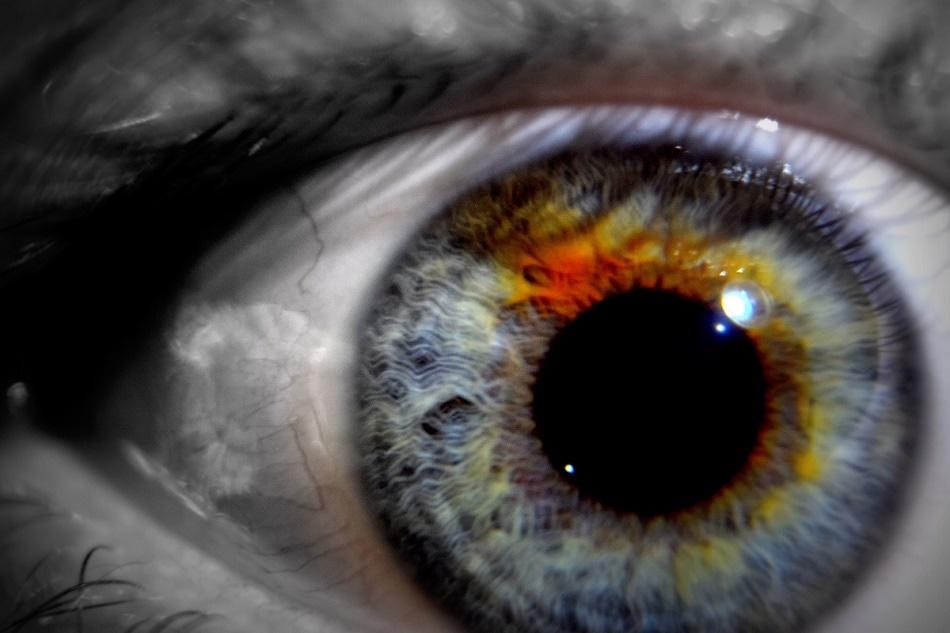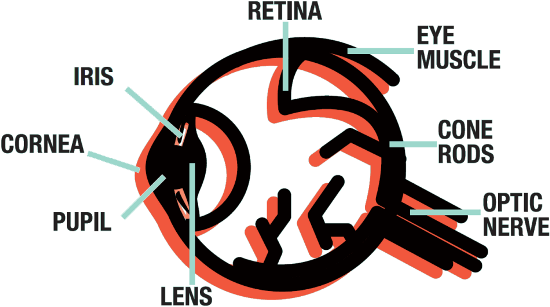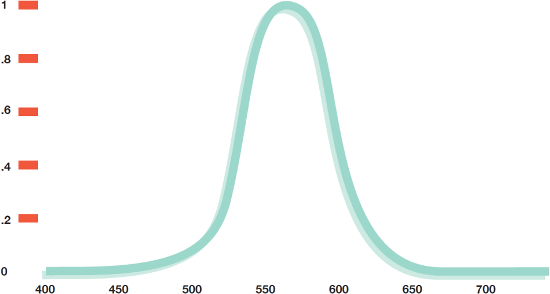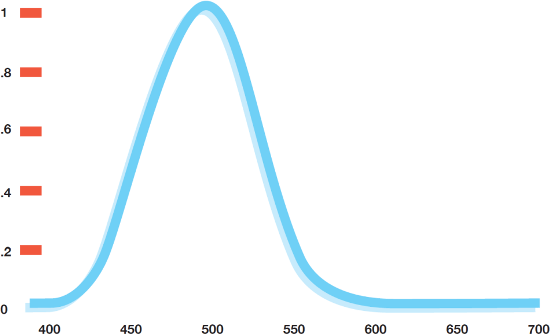Sponsored by AdmesyFeb 20 2018
Humans sense light in a completely different way than scientific equipment, this means that we are inherently biased when it comes to seeing color and light.

Image Credit: Chloe Langton/shutterstock.com
The human eye is incapable of distinguishing individual wavelengths but is sensitive towards different parts of the spectrum covering multiple wavelengths. The basis of the photometric principle is formed by this response. Eyes contain rods and cones – while rods make it possible to see under different luminance levels, cones help to distinguish colors.

The Human Eye. Image Credit: Admesy
Scotopic and Photopic Vision
Scotopic vision uses only rods to see, meaning that objects are visible, but appear in black and white, whereas photopic vision uses cones and provides color. Mesopic vision is the combination of the two and is used for most scenarios.

Human eye luminance level range and types of vision: cd/m2 . Image Credit: Admesy
Photopic Vision
Photopic vision typically dominates under normal lighting conditions, for instance during daytime. It is based on three types of cones which are sensitive to short, middle, and long wavelength ranges, which generally appear blue, green and red, respectively to the human eye.
Cones are limited in terms of light sensitivity. Vision above 3 cd/m2 is based on photopic vision which allows for good color discrimination. In 1924, the Commission Internationale de l’Eclairage [CIE ] defined a general photopic spectral sensitivity function of the average human eye on the basis of several experiments.
The photopic sensitivity is based on the midrange of the visual spectrum called the ȳ(λ) or Vλ and the basic principle of the response of light meters. The function graph illustrated above shows that the human eye is not equally sensitive to light over the whole visual spectrum: the peak sensitivity is concentrated around 555 nm.

Photopic Absorption Curve. Image Credit: Admesy
Scotopic Vision aka Night Vision
Rods are more sensitive to light than cones. However, rods are not sensitive to different colors as there is only one kind of rod. For this reason, human vision is unable to distinguish colors under low light conditions. However, rods are very effective under low light conditions below 0.001 cd/m2.
This type of vision is referred to as scotopic vision which has been defined by the CIE in 1951 as the relative sensitivity of scotopic vision: V’λ. The highest sensitivity of scotopic vision is found at a wavelength of about 507 nm. Purkinje effect is the shift in peak sensitivity when switching between scotopic and photopic vision. Light levels between photopic and scotopic vision are mediated by a combination of cones and rods which is called mesopic vision.

Scotopic Absorption Curve. Image Credit: Admesy
In general, the photometric quantities of light sources are measured as one normally functions under normal lighting conditions. Scotopic quantities of light sources may be given by an S/P ratio: the ratio between the photopic and scotopic values of a light source. Once the output of the light source is known for both scotopic and photopic conditions, the scotopic output of a light source can be measured when measuring its photopic value.

 Download Admesy's Guide to Light for More Information
Download Admesy's Guide to Light for More Information

This information has been sourced, reviewed and adapted from materials provided by Admesy.
For more information on this source, please visit Admesy.